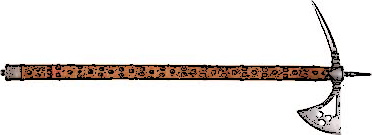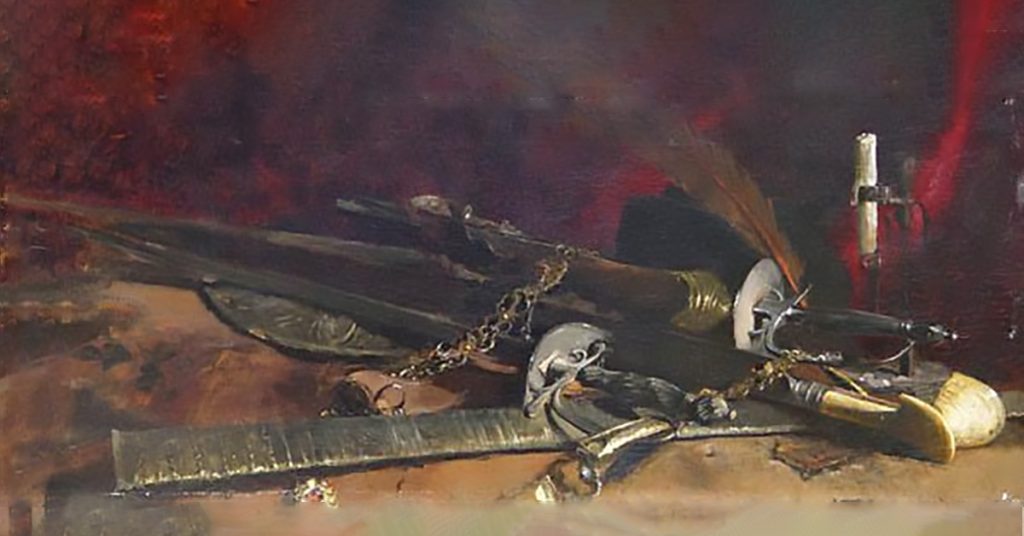Back to Melee Weapon Search
Axe, battle
Axe, Blade, Piercing, Military, Latin Europe, Central Asia, Pirate
An axe designed for cutting people as opposed to trees. Contrary to mythology, battle axes were relatively small and light like every other military weapon, and didn’t have giant three-foot wide, 10 kilo blades like in a Frank Frazaetta* painting. Axes used for war or hunting were generally lighter and slimmer than axes used to fell trees, rather than the other way around. The typical battle axe was also a relatively small single-handed weapon (though there were two-handed axes, see Great Axe and Sparth Axe). Nevertheless, the battle axe was brutal, it could slice off limbs, split heads or hack shields to pieces with relative ease, and cut through shields or light armor without problems. (* Frank Frazetta is awesome, but sometimees exaggerates the size of ... this and that).
 South German battle axe, early 16th C, with a hammer head and a front spike. This would be AP +1 (Pierce only) and CB Primary attack types.
South German battle axe, early 16th C, with a hammer head and a front spike. This would be AP +1 (Pierce only) and CB Primary attack types.  A German / Carpathian battle Axe, late 15th C. This would be AP +2, CP Primary Attack.
A German / Carpathian battle Axe, late 15th C. This would be AP +2, CP Primary Attack.  An exquisite Italian battle-axe featuring a back spike and a front spike, circa 1570. This would be a AP +2 weapon (Piercing) and CP Primary attack, Grapple +3.
An exquisite Italian battle-axe featuring a back spike and a front spike, circa 1570. This would be a AP +2 weapon (Piercing) and CP Primary attack, Grapple +3.
| Name | Size | Reach | Speed | Defense | Base Damage | Attack Types | Primary Attack Types | Armor Pierce | Grapple | Hardness | HP |
|---|---|---|---|---|---|---|---|---|---|---|---|
| Axe, battle | M | 3 | 1 | 2 | 1-12 | C | C | 0 | 2 | 7 | 5 |
 South German battle axe, early 16th C, with a hammer head and a front spike. This would be AP +1 (Pierce only) and CB Primary attack types.
South German battle axe, early 16th C, with a hammer head and a front spike. This would be AP +1 (Pierce only) and CB Primary attack types.  A German / Carpathian battle Axe, late 15th C. This would be AP +2, CP Primary Attack.
A German / Carpathian battle Axe, late 15th C. This would be AP +2, CP Primary Attack.  An exquisite Italian battle-axe featuring a back spike and a front spike, circa 1570. This would be a AP +2 weapon (Piercing) and CP Primary attack, Grapple +3.
An exquisite Italian battle-axe featuring a back spike and a front spike, circa 1570. This would be a AP +2 weapon (Piercing) and CP Primary attack, Grapple +3.
